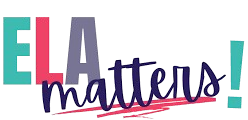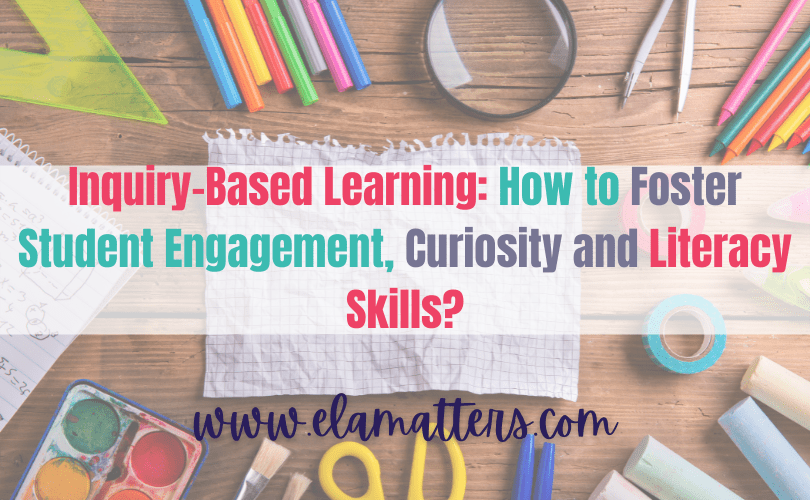When I taught Grade 6 French Immersion, I started using inquiry-based learning in my classroom towards the end of the school year. My goal was for my students to apply all the comprehension strategies they had learned. This positive experience, both for me and them, convinced me even more of its benefits. If you wish to find out how I did it in my class, keep reading!
Teaching through inquiry
But first, what is it? Inquiry-based learning is a type of approach that focuses on the students’ interests and fosters curiosity, critical thinking and communication. By conducting an inquiry, which is basically a research, the students develop their literacy skills and expand their knowledge.
Inquiry-based learning is a powerful differentiation tool in the classroom because it allows the teacher to explore literacy content and to teach literacy skills across the entire curriculum. Also, by focusing on the students’ own interests to lead their inquiries, they are more motivated to learn. Finally, inquiry-based learning allows to differentiate the products by offering to students different ways to present their learning.
How to prepare for inquiry-based learning
Teach some basic skills prior to
Before getting into inquiry-based learning, you must set up your students for success. They will not be able to complete an inquiry without some basic comprehension skills that will help them complete each step of the process. First, students need to be able to formulate a deep question, a question that requires a deeper level of thinking and reasoning. After modelling to my students how to ask deep questions when reading, I presented them this scaffold to help them rephrase their initial questions into deeper questions when needed :
Having a deep question will help your students find interesting facts and information about their topic.
Second, students need to be able to identify important information and take notes. This is especially important since the information they find will become the information they present. Therefore, the quality of their inquiry depends on what kind of information they select when reading.
Finally, students will have to summarize and synthesize their notes in order to select the information that answers their question. For this last skill, you could choose to start the inquiry process before teaching it, as it will take some time for your students to get to that step.
Model Internet research
Since your students will be doing a lot of research and since it is important for them to learn 21st century skills, such as critical thinking, you should teach them how to research on the Internet. They need to know how to find reliable sources and how to identify them. Being able to do part of their research online will also help them gather more information about their topic since they will have a greater and easier access to information.
To do so, I made a list of 10 questions to ask when evaluating the reliability of a source on the Internet (not exhaustive). I then modeled to my students how to use the list by analyzing and comparing 3 different sources with it. My students also had a chance to practice in class and to get familiar with the list.
Gather a variety of resources
To assist and help your students through their inquiry process, I would suggest gathering a variety of resources on topics that you know your students are interested in. For example, if your students are curious about space, you could find some interesting documentaries, videos, podcasts, websites or magazines to put at your students’ disposal. Plus, by doing so, you are also making sure that your students have access to reliable sources!
Steps of the “Inquiry Project”
My students did an “Inquiry Project” over the course of about 6 to 8 weeks, starting in April, using a template I made in Google Docs for them to plan their inquiry and take their notes. I attached the document in our Google Classroom, which allowed me to follow and guide them through every step of their inquiry. They had to turn in their document each time they completed a step so I could review it and give them feedback before they moved on to the next one. Some students completed only 1 inquiry project, whereas others completed 3 in that time frame!
*click here for the “Inquiry Project” template I made. Make sure you make your own copy by selecting File -> Make a copy.*
Below are the details of the specific steps of the “Inquiry Project” that my students followed.
- Identify an inquiry question
The first step of the inquiry process is to identify a question that can be researched and that comes from the student’s interests. Like I mentioned before, it is important that the students form a deep question and some might need some assistance in doing so. Once they had their question, my students had to do a first research to find some reliable sources and give me the information so I could double-check them. I did this to ensure that my students had reliable sources since that was part of their mark, but you don’t need to do this.
- Take note of the information
After their inquiry question and their sources were approved, students could start reading and taking notes of the important information in the Google Docs template. After they turned it in, I would review their notes to make sure the information seemed correct and that they had enough information.
- Synthesize and summarize
For the third step of the inquiry, students had to synthesize and summarize their notes by selecting the information that directly connected to their question, which they would include in their presentation. I would review this part to make sure nothing important had been left out.
- Present your learning
On the very last page of the document, students had to plan their presentation and have it approved. They could then start to work on it during class or even at home, and turn it in once it was completed. For presenting, I offered a variety of ways for my students to choose from, as this helps differentiate learning even further : book, video, poster, model, comic book and article were among the choices. I also had an “other” section where they could choose another way to present. For example, some students wanted to do a Google Slides presentation, which I had not listed.
Once I had a minimum of 4 projects handed in, I would put them up around the classroom and give the students 10 to 15 minutes to go around to look at them. They then had to complete a Google Form to give feedback on their favorite project among the ones presented that day. When giving the students their marks, I would also give them their peer’s comments from the Google Form. Students always looked forward to presentation days and were disappointed when there weren’t any.
In conclusion, my students enjoyed working on their inquiry projects and were motivated throughout the duration of it. It gave them ownership of their learning, and also helped them apply their literacy skills in a real context, where reading serves a purpose. They felt very proud of their presentations and put a lot of effort into them.

